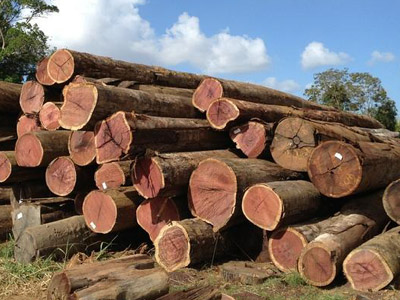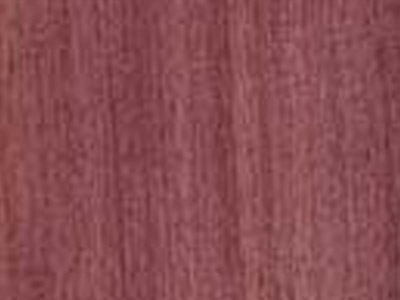Purple Heart
- General Details
Origin :
Central and South America (from Mexico down to southern Brazil)Color or Appearance :
When freshly cut the heartwood of Purpleheart is a dull grayish/purplish brown. Upon exposure the wood becomes a deeper eggplant purple. With further age and exposure to UV light, the wood becomes a dark brown with a hint of purple. This color-shift can be slowed and minimized by using a UV inhibiting finish on the wood.Grain/Texture :
The grain is usually straight, but can also be wavy or irregular. Has a medium texture with good natural luster.Endgrain :
Diffuse-porous; medium to large pores, few; solitary and radial multiples; mineral deposits occasionally present; growth rings may be either distinct or indistinct depending on species and growing conditions; medium rays barely visible without lens, normal spacing; parenchyma winged, lozenge, confluent, unilateral, and occasionally marginal.Rot Resistance :
Purpleheart is rated as being very durable, and resists both decay and most insect attacks, though it has been reported to be susceptible to attack from marine borers.Workability :
Working with Purpleheart can present some unique challenges: if the wood is heated with dull tools, or if cutter speeds are too high, Purpleheart will exude a gummy resin that can clog tools and complicate the machining process. Depending on the grain orientation, can be difficult to plane without tearout. Purpleheart also has a moderate dulling effect on cutters.Odor :
Varies depending upon the species: most species have no characteristic odor, though some species can have a pungent scent.Allergies / Toxicity :
Although severe reactions are quite uncommon, Purpleheart has been reported as a sensitizer. Usually most common reactions simply include eye and skin irritation. Purpleheart has also been reported to cause nausea.Comman Uses :
Inlays/accent pieces, flooring, furniture, boatbuilding, heavy construction, and a variety of specialty wood items. - Technical Info
Tree Size :
100-170 ft (30-50 m) tall, 3-5 ft (1-1.5 m) trunk diameterAverage Dried Weight :
56 lbs/ft3 (905 kg/m3)Specific Gravity (Basic, 12% MC) :
.76, .90Janka Hardness :
2,520 lbf (11,190 N)Modulus of Rupture :
22,000 lbf/in2 (151.7 MPa)Elastic Modulus :
2,937,000 lbf/in2 (20.26 GPa)Crushing Strength :
12,140 lbf/in2 (83.7 MPa)Shrinkage :
Radial: 3.8%, Tangential: 6.4%, Volumetric: 10.6%, T/R Ratio: 1.7



